Patching things up
(Header image: Common Ground Dove.)
The conversation usually goes something like: “Is there somewhere you would like to go tomorrow?” Gini responds, “Anywhere is fine with me.”
“Anywhere” will typically be within our home county as we like to keep tabs on what’s happening with “our” resident birds. Since we live in west-central Florida, there are many great birding destinations within a couple hours’ drive and we often explore those venues. One day, I’ll surprise her and take her shopping. She would never forgive me.
For today, “anywhere” will be what has become another local “patch”. Birders tend to return to places which don’t require extensive travel yet offer good observation opportunities. As we become familiar with those areas, we get to know the bird populations and it becomes easier to spot “newcomers”. Since we know the terrain well, not becoming lost and knowing where to go helps with efficiency. For birders, patches are good things.
Formerly mined extensively for phosphate, Tenoroc Fish Management Area has over 7500 acres (3035 hectares) to explore. Much of that is water. Old mining pits have been reclaimed and transformed into excellent fishing lakes. The area is only open Friday through Monday and anglers come from long distances to be first in line to get to their favorite lake. Management only allows a limited number of fishermen on each lake in order to avoid overfishing. (It doesn’t hurt that this vast playground and new “patch” is only ten minutes from the front door.)
With all of that space and water, birding can be quite good. We have found some spots more productive than others and it has been easy to fall into a routine. By the time we check the “good” spots, it’s time to head to the house.
Today, we decided to be bold and explore a couple of trails we had heretofore not trod.
Here’s the thing. Somewhere along the 50+ year journey of becoming avid birders, we made the rather startling discovery that we may be “amateur naturalists”. Especially in the past couple of years, we become easily distracted from birding by a butterfly, an interesting plant, dragons and damsels and even – gulp – fungi!
So, even though today’s trip did not result in a large number of birds seen, we found two new trails which hold great potential for migrating birds and which provided some terrific sightings of insects and flowers which made for a very successful day.
As usual, my genius Gini’s “anywhere” turned out to be a winner. Just like her.
Yup. We made images.
The first path had a lake on one side and a steep ravine and creek on the other. Tall hardwood trees in the ravine and willows along the lake screamed “birdy”! Now, if we can just convince the birds how nice it is. As with all things in life, timing is everything. (Apologies for the image quality. Cell phone camera.)
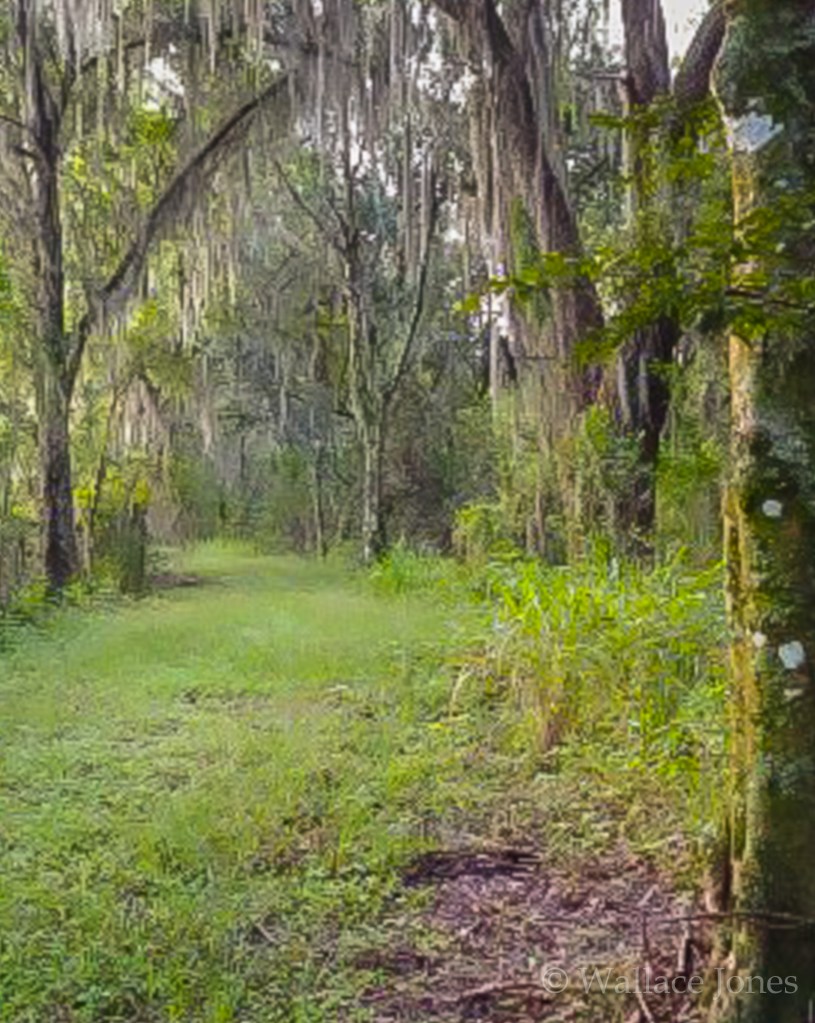
The Ornate Bella Moth (Utetheisa ornatrix) has two endearing qualities: it is active in the daytime, making it easier to see; and it’s sorta pretty.
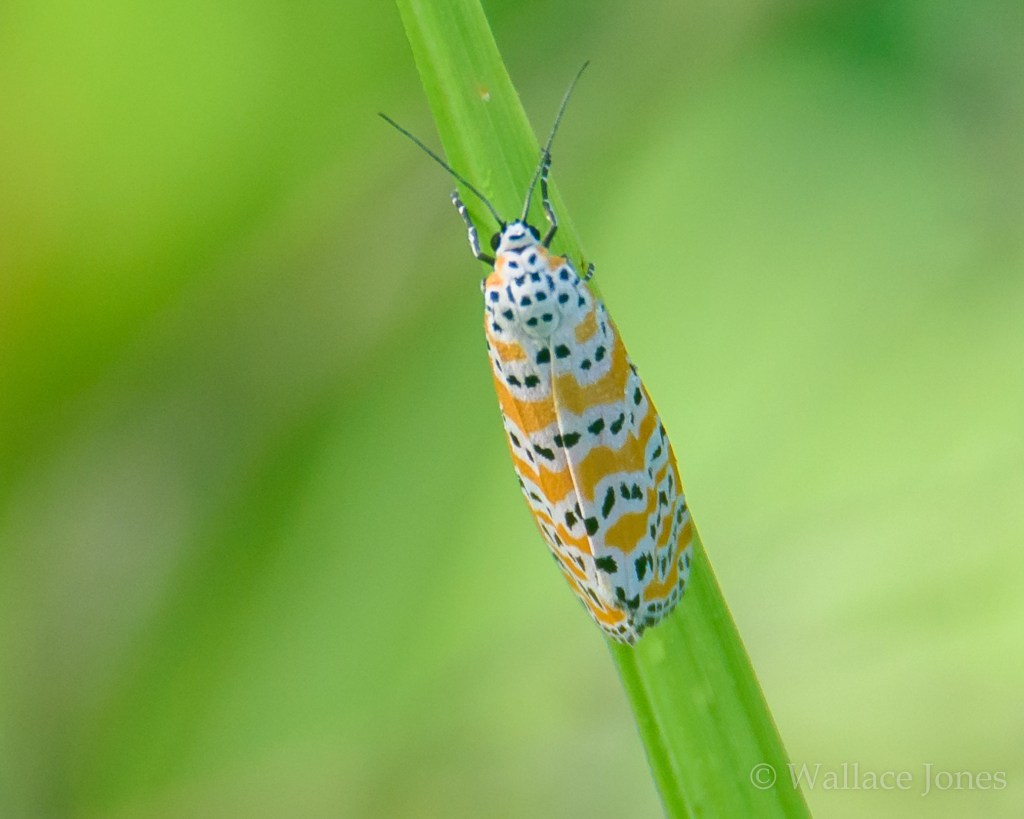
One of Florida’s more common butterflies, the White Peacock (Anartia jatrophae), also happens to be fairly attractive.

During the morning, we counted six Blue-gray Gnatcatchers. These sleek hunters rarely pause as they inspect every twig and leaf for insect snacks.

As dragonflies go, the Needham’s Skimmer (Libellula needhami) is medium-sized and the male is hard to miss with his reddish-orange body. The female pictured here has a warm brownish-orange abdomen and gold-tinted wings.
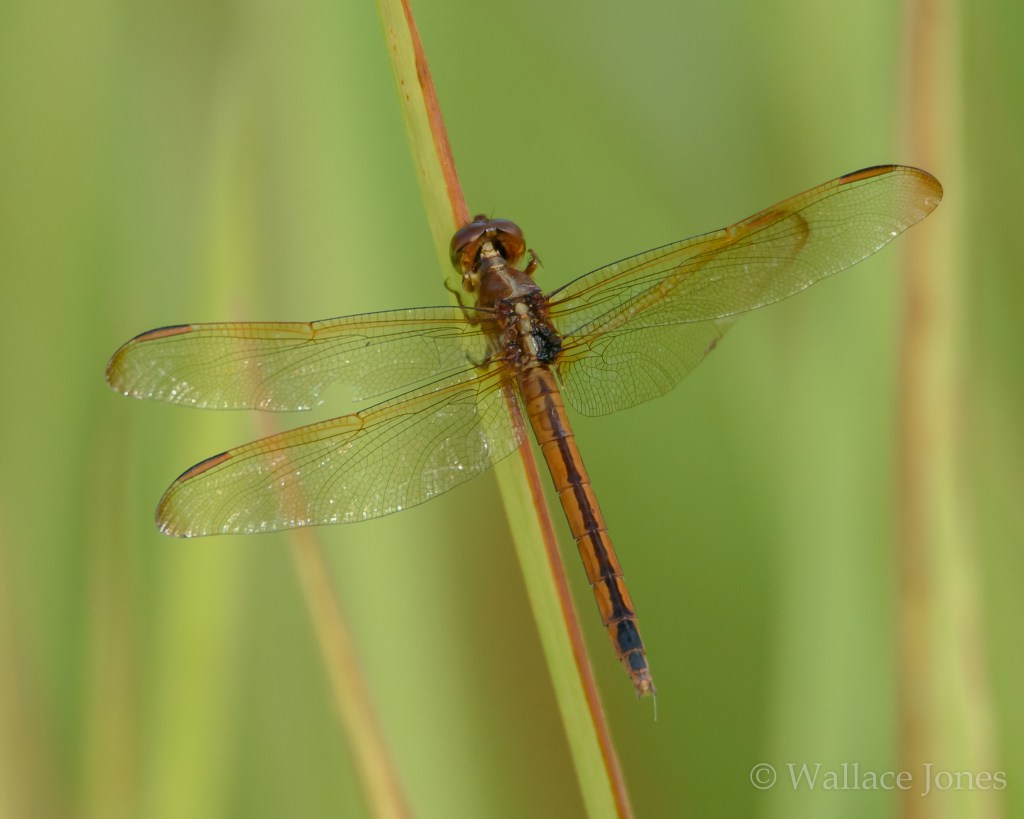
Small and gorgeous. A Carolina Satyr (Hermeuptychia sosybius) is a woodland butterfly with “eyes” on its wings to help fool would-be predators.

During annual molting, many birds, such as the Eastern Meadowlark remain silent as they have only limited ability to fly. Once new feathers are in place, a convenient perch in a field becomes a stage from which the unmistakable clear notes of this songster are broadcast for those fortunate enough to be in range.
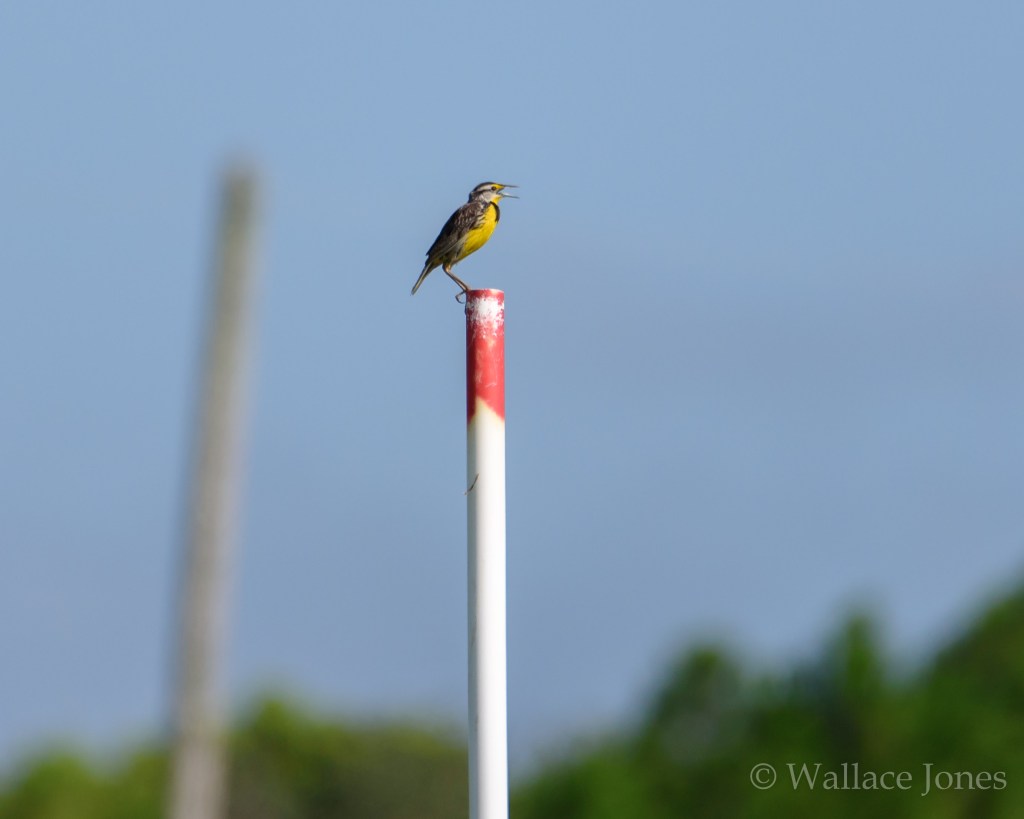
Wandering Gliders (Pantala flavescens) are true to their name and can normally be seen zipping back and forth guarding territories and chasing rivals and potential enemies. Knowing they have to land SOMETIME and actually finding them when they do are two different things. We found one! Woo-hoo!
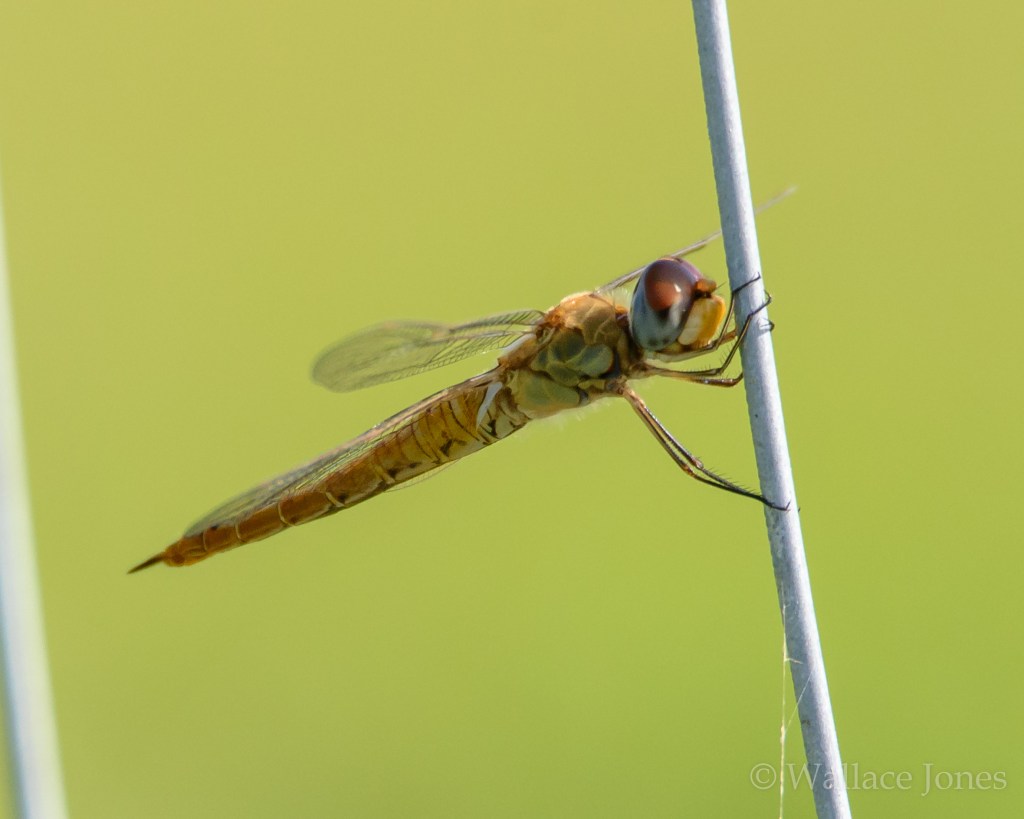
This path was bordered on the north by a lake and on the south by a really nice wetland area, filled with cypress trees, willows and a few oaks and hickory trees. Again with that timing thing. We’ll keep tabs on this spot as fall migration gets busy. (Again, cell phone quality.)

Small, brownish-gray and a few tiny white spots help identify a Clouded Skipper (Lerema Accius). Even simplicity in nature is beautiful.
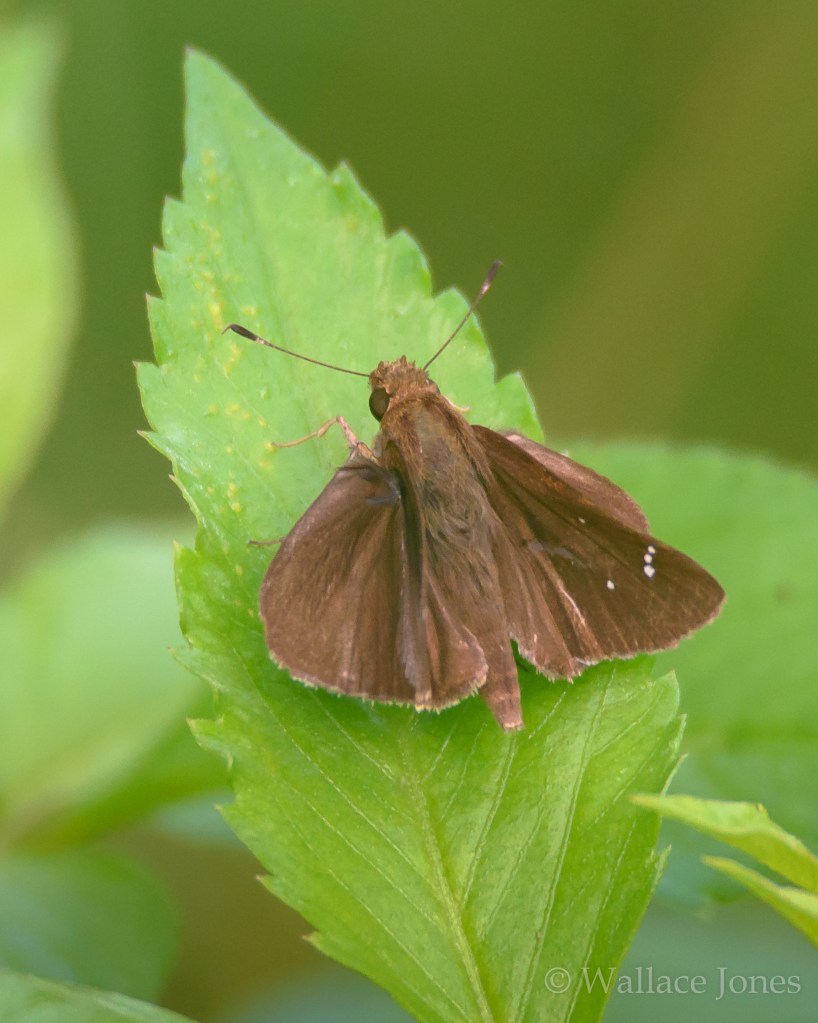
No subtlety here! A colorful Spicebush Swallowtail (Papilio troilus) shows off its black and contrasting wash of blue, which identifies it as a female. The male displays a wash which is more greenish.
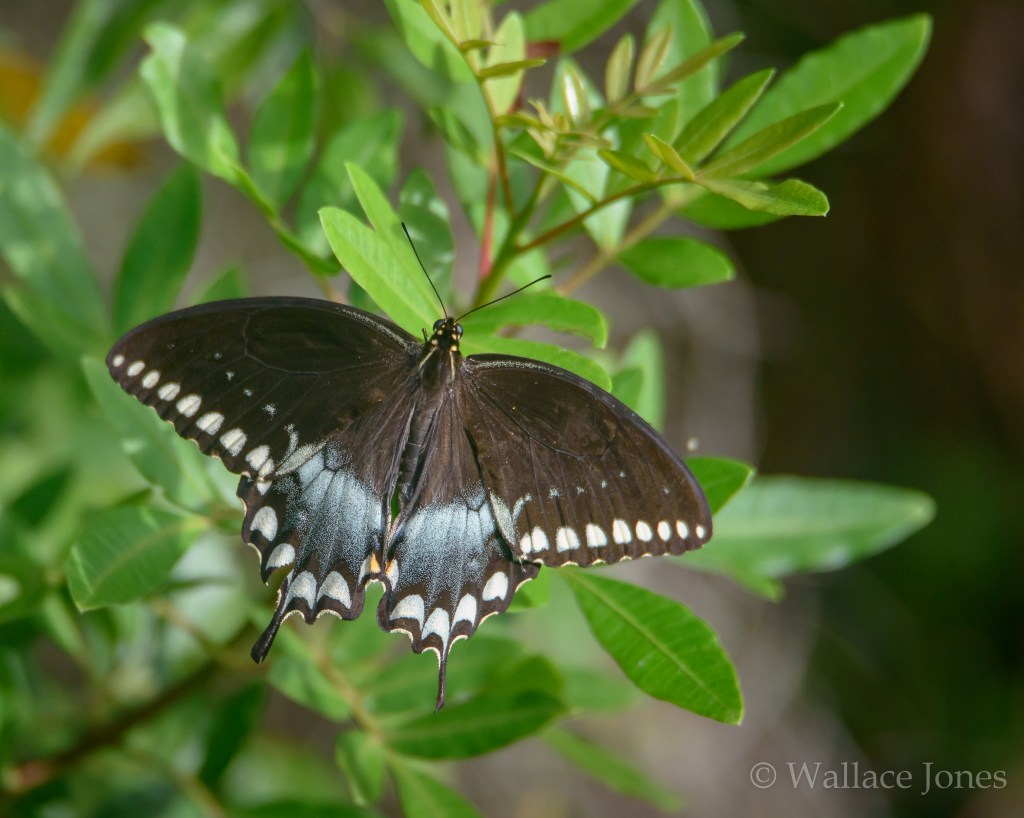
If it hadn’t moved just a bit, I would have walked right by this Royal River Cruiser (Macromia taeniolata). Although they are large for a dragonfly, they blend in surprisingly well with their perches.


And, if I had not seen the dragon above, I would have missed the Blue-faced Darner (Coryphaeschna adnexa) which was hanging about six feet beyond it. Thus proving my motto: “Better lucky than good!”
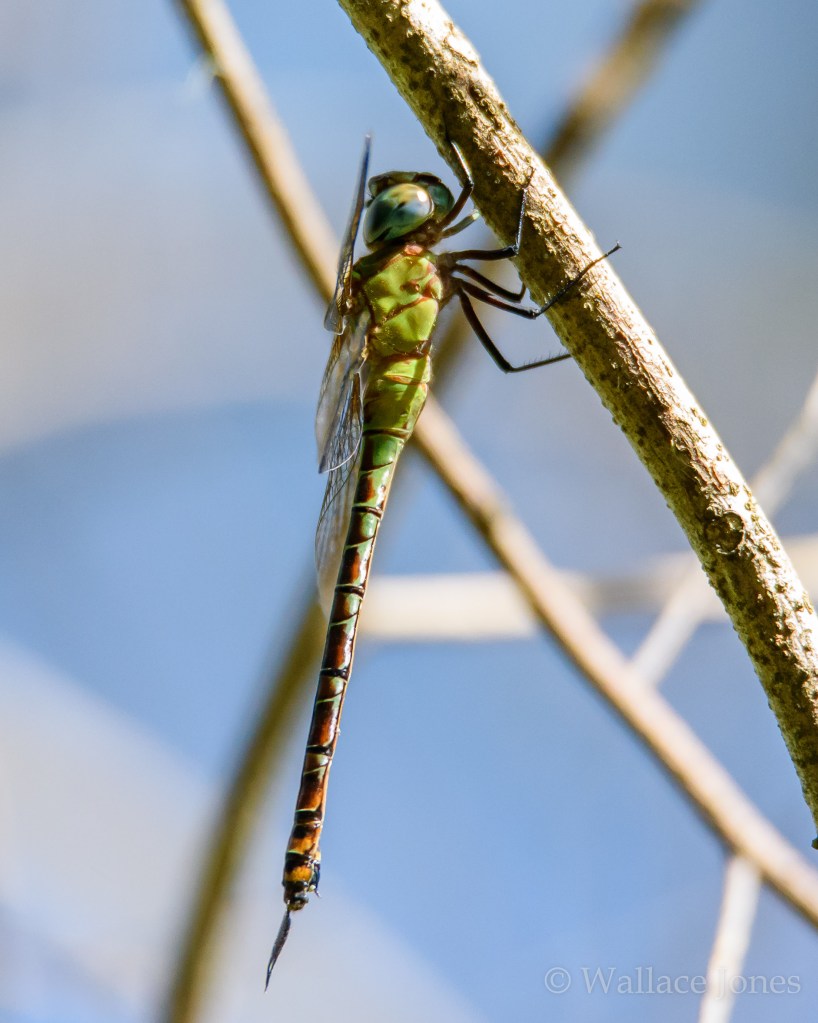
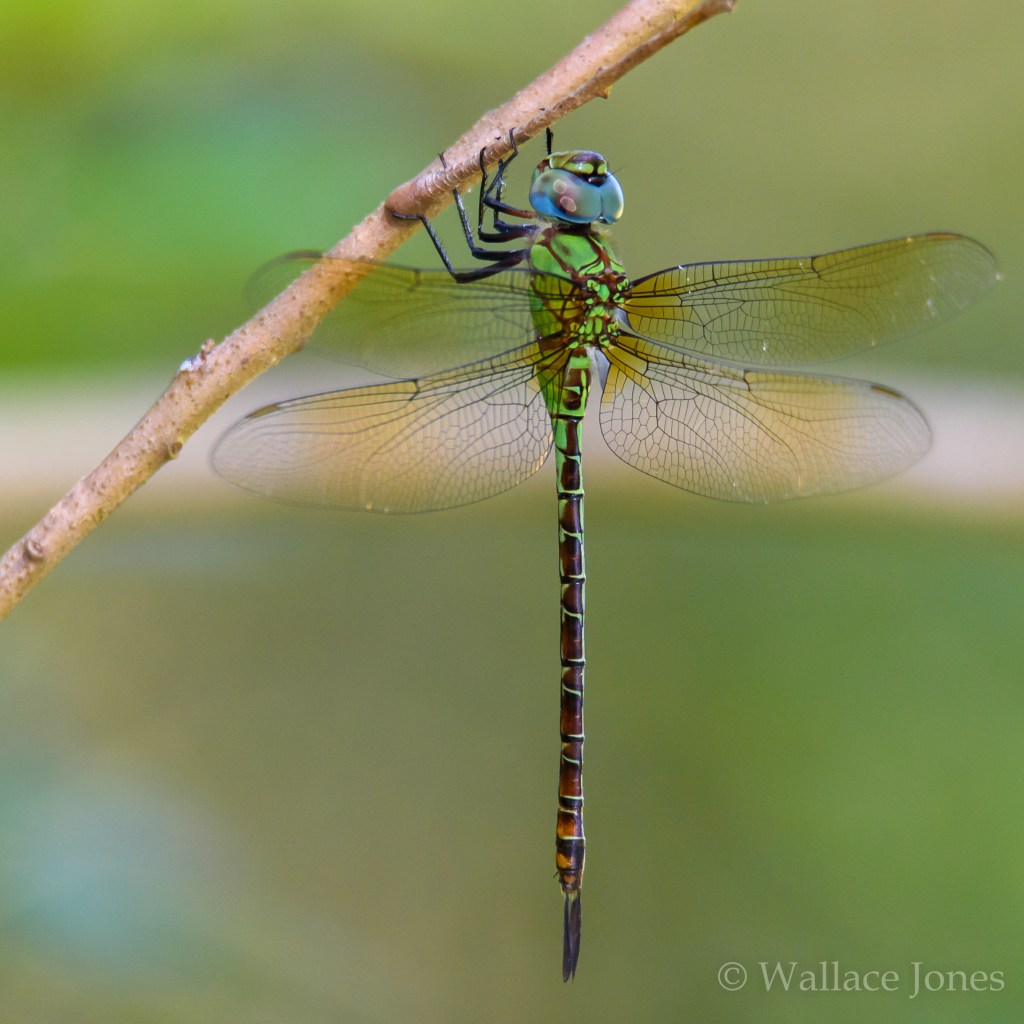
Heading home, we spotted a movement in a tall pine tree and parked to take a closer look. A magnificent Red-tailed Hawk! She appeared to have fresh prey which may have been a rabbit. Her head snapped around and I took a couple of quick shots and left her alone to enjoy lunch.
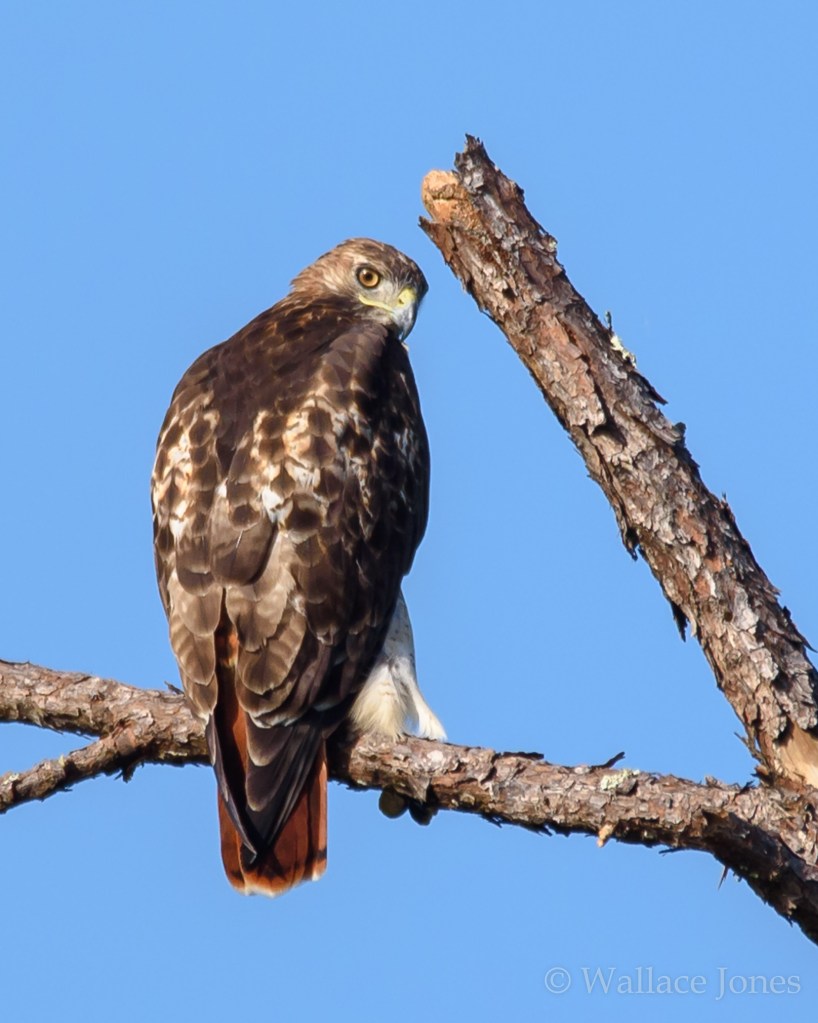
We are not yet familiar with all of our new “patch”. Does that make it a “patch-work in progress”? The portions we have explored so far makes anticipating future trips an exciting prospect!
We hope you enjoy your search for a natural place and come back for a visit!
Additional Information
Thats a nice looking path. We are restricted to 5km from home at present, and decent habitat is a bit thin on the ground in that area! In 3 weeks I may be able to travel a bit further.
Cheers – Stewart M – Melbourne
LikeLike
Here is hoping you will soon be able to return to your favorite outdoor venues, Stewart, and explore new ones as well.
Thank you so much for taking the time to visit with us.. All the best.
LikeLike
That Ornate Bella Moth is striking, Wally. And no need to apologize for the cell phone photos. They really provide a sense of the place.
LikeLike
Thank you, Ed. I keep trying to remember to take other lenses on birding trips, but that memory thing is becoming more elusive.
LikeLike
I think we are all suffer from the same affliction, Wally. We are first, foremost and always birders, but over the years we warp into generalists, with little failing to escape our eye, or our curiosity. And one discipline helps with the others. If you know what kind of tree a given warbler nests in, it improves your chances of detecting the warbler if you are able to identify that tree. On a trip to Cambodia a few years ago, a local told me that best way to find a given species (I can’t bring the name to mind at the moment) was to follow the outbreaks of its preferred insect prey. Made perfect sense to me!
LikeLike
You are, of course, correct, David.
I liken it to a child’s curiosity. Always asking “why”. One thing leads to another and before you know it, I’m an old man taking pictures of bugs because I love bird-watching!
Life. Is. Good.
LikeLike
What a beautiful place for birds and bugs! Wonderful photos of all. During the molting season it really got quiet in our patch. Now the dawn chorus is ramping up, mostly mockingbirds, cardinals, Carolina Wrens and White-eyed Vireos (along with the rhythm section– Boat-tailed Grackles). Migrant warblers are quietly appearing.
LikeLike
It’s a neat area, Ken. Looking forward to hunting for migrants in the coming weeks.
Loved your Facebook portraits from MINWR!
LikeLike
Looks like you have found a good spot. Probably won’t be as crowded as that popular Lakeland preserve. Might have to try it soon.
LikeLike
Lots of territory to explore! Don’t go in the next several days without calling first. They are closed due to a sink hole in the main road.
LikeLike
This looks like an extremely promising addition to your local patch, Wally, even if it was a little light on birds.
Although I can often see similarities, your dragons and butterflies always seem so much more exotic than ours, as beautifully depicted in this post from you. I swear that Red-tailed Hawk in your wonderful photo has a guilty look on its face!
I can relate to Gini’s genius in prompting visits – Lindsay has an amazing talent for suggesting places to go (sadly, usually for me alone) that end up delivering the goods, and a great talent for spotting things when we are out together. I just wish her descriptive talents for location were better than “over there!” and that she knew left from right!
Autumn (‘fall’ to you) is now in evidence here, with its accompanying positives and negatives. The insects will soon be hard to find, but the birds side of things should be picking up.
Stay safe. Best wishes to you and Gini – – – Richard
LikeLike
Not to worry, Richard. This area is an excellent birding location. Our choice of paths to explore simply weren’t too populated with our feathered friends that day.
The past few days have been much lower in humidity than normal which has made walking about in early mornings quite pleasant. Almost “autumn-like”!
We are doing very well and certainly send our best to you and Lindsay.
LikeLike
I reckon you’d have a fight on your hands if you tried to take the rabbit. She looks a meanie mustard. You won me over Wally, I am a naturalist but faced with a choice my camera always points to a bird. Shame we have no moths like that first beauty! You will be pleased that the only shop I have entered in Skiathos so far is Spar supermarket for a bottle of nightcap Metaxa. By the way, that Harry Hewitt chap – you can keep him.
LikeLike
Hey, you’re supposed to be enjoying the Grecian sun, not commenting on some Yank’s blog!
You are forgiven, this time.
Truth be told, I also have one of those afflicted cameras which swings towards a bird whenever one is present. Old habits …
Gini and I hope you are truly able to relax and erase what’s happening in the rest of the world for awhile.
LikeLike
Although I occasionally read people’s comments about spitting coffee on keyboards,I’ve rarely taken them seriously. However, I nearly did just that when I read, “One day, I’ll surprise her and take her shopping. She would never forgive me.” That’s a woman after my own heart.
I’m not good with dragonfly identification, but I’m improving. You have some beauties here; I’m especially taken with the Blue-faced darner. I enjoyed the Carolina Satyr, too. I’ve seen precisely one, and it was on the woodland trail that led to the San Bernard oak. It took me some time to identify it, but it will be easier to ID the next time I see one.
There’s a small patch of land that’s been especially good for flower-finding over the years. It’s a hay meadow that’s been cut only twice a year: a couple of acres at the edge of a fish camp. It’s an out of the way spot, but it’s for sale now, and they’ve been keeping it trimmed up. I ought to make a drive over there and check it out this weekend, since so many places still will be under water from TS Beta.
LikeLike
I’ve always had problems with some bird i.d.’s (think: sparrows!) but as we became more interested in insects – aspirin didn’t help my aching head. If there were no challenges, it wouldn’t be fun!
Looking forward to a future essay on that hay meadow.
What most concerns me, however, is that I may have inadvertently almost been responsible for a waste of coffee! That would have gone on my permanent record.
LikeLike
Hello,
I enjoyed your visit to the new trail or patch. The butterflies and dragonflies are beautiful. The White Peacock is my favorite. Love the Eastern Meadowlark. I will look forward to your next visit to this new patch. Take care, enjoy your day!
LikeLike
Hi, Eileen! Thank you so much and we’ll save you a spot on the trail.
LikeLiked by 1 person
The White Peacock is quite the looker and love the name Royal River Cruiser. Always good to mix birding with watching other wildlife, a bad birding day can be good for other things.
LikeLike
We love mixing birds, bugs, blooms and other natural stuff!
Thank you, Brian!
LikeLiked by 1 person
WONDERFUL.
Huge thanks to you and Gini. I hope to go back to this new patch with you time and time again.
LikeLike
G’Day E.C.
You will always be welcome to join us!
LikeLike